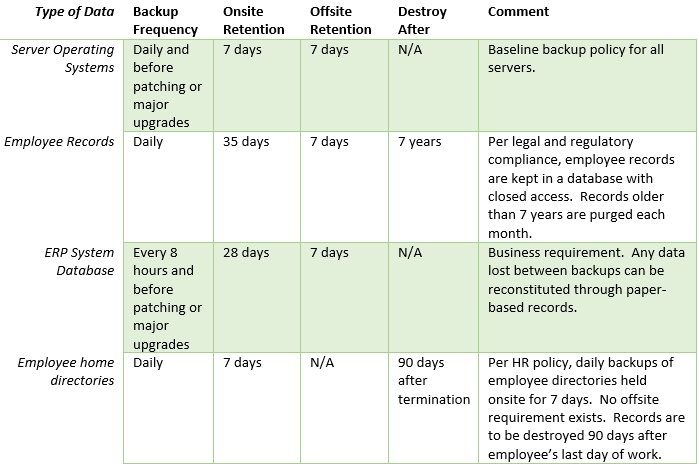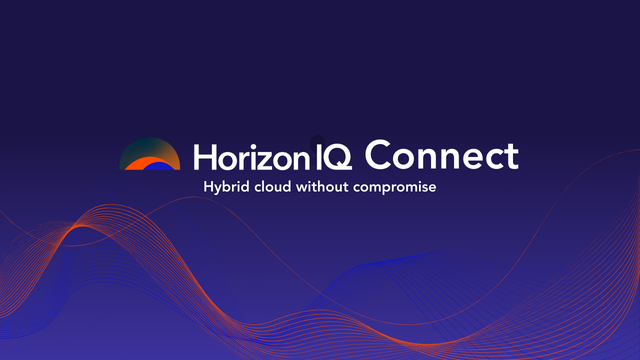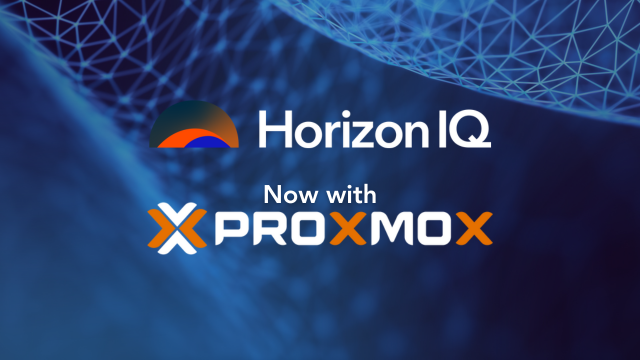Month: January 2017

Editor’s note: This is part five of a five-part series profiling a handful of INAP’s talented NOC employees who are responsible for delivering “Better Engineered Support”. At the bottom of the profile, find links to explore more interviews.
Name: Brian Jones
Title: Customer Care Associate
When did you start at INAP? Early December in 2015.
I heard you recently won an award? Yes! September of 2016, I was “NOCster” of the month. The NOC is about 60 employees, so it meant a lot to me. To be able to get that within the first year of being at INAP was a real accomplishment — as far as I’ve heard that’s not been done before—or at least in a long time.
What made you win the award do you think? Being a team player, always willing to move our team forward if that means changing shifts…just doing whatever needs to be done. I try my best to treat everyone with respect and equally regardless of if they’ve been here a week or a decade.
Which office do you work in / where do you live? I work in the Atlanta NOC, and live downtown near the Hartsfield-Jackson airport.
Did you go to school around there? Yes, I went to West Lake High and graduated from Savannah State University.
What is the most challenging thing about your job? I work third shift, so being here when some of the team isn’t. I sometimes have to dig deeper into situations on my own, but I like doing that.
You mentioned third shift. When is third shift? 9PM ET to 8AM ET.
Was it tough transitioning to a night schedule?? It was definitely something I had to get used to. But, it was what the team needed and I wanted to make an impact so I stepped up and took on the challenge. Once you get past the sleep part of it, it gets pretty easy.
Who contributed to your success here at INAP? The whole CCA team. Rebecca Barnes was my trainer when I started and had such a great impact on me.
If you could do anything at INAP outside of your current job, what would it be and why? I think I would like to be an implementation manager at the company. I have wanted to do project management and implementation as I have a background in that.
Favorite movie: Harlem Nights
Favorite musician: Outkast! They were trailblazers for the South. Being from Atlanta, they just narrated the story of the South. Growing up here, mainly in Atlanta, they told it in such a unique manner that it really connected with me.
Hobbies: I love sports. I’m a huge sports fan – love watching live games. Like to travel. Love food.
Ok, tell us more. Favorite sports? Basketball and football…. Lakers for Hoops, Falcons for football.
If you could travel anywhere, where would you go? I have an obsession with Spain. I have no idea where it comes from, I’ve always just been so intrigued by Spain.
Would you consider yourself a “Foodie”? YES! – I love trying new foods…I’ll try anything once.
What’s the craziest thing you’ve tried? I once ate raccoon. I was in Jacksonville in the backwoods and was offered barbequed raccoon. Don’t ask me how they found it. It was so gamey. I think my subconscious is trying to get me to forget what it tasted like. I wouldn’t recommend it to anyone.
So why should someone do business with INAP? Honestly, we just have some of the best individuals both leading our support team and on our support team. The people in the NOC are diligent, caring, and above all just knowledgeable about what we do.
Outside of INAP, what is important to you? I’m just an easy-going guy who stands on his principles. I believe in living by principles, they give you a path, a guided path to go on. When you always have something to lean on, like a set of principles, you have a foundation for handling any situation. Just an easy-going guy who stands on his principles.
What are those principles, for you? My principles are honesty and integrity. I was raised blue-collar. My father always said “If they pay you a nickel, you give them a dime’s worth of effort.” Those are the principles I live by.
Any family in the area? My immediate family is all still in Atlanta. I have two older brothers Shawn (43) and Damien (36), my mother Cynthia and father James.
What do you like most about your job here at INAP? At INAP I like both the individual challenge and team aspects. We resolve the customer requests on our own, but we’re still a part of a team if we need help or information. I feel integrated in the team even though I usually only see the Atlanta NOC team, but I talk to the Seattle team a lot. I don’t feel like “Brian on the third shift”, I feel like a part of the team.
Want to explore other “Our NOC Rocks!” interviews?
Click a name below to learn more.
Mike Palladino (part one) – Jeffry Bass (part two) – Lisa McClellan (part three) – Terryn Moser (part four) – Brian Jones (part five)
Explore HorizonIQ
Bare Metal
LEARN MORE
Stay Connected

Editor’s note: This is part four of a five-part series profiling a handful of INAP’s talented NOC employees who are responsible for delivering “Better Engineered Support”. At the bottom of the profile, find links to explore more interviews.
Name: Terryn Moser
 Title: Customer Care Associate Lead
Title: Customer Care Associate Lead
When did you start at INAP? November 2014. I first started as a CCA (Customer Care Associate).
Which INAP office do you work in, and where do you live? Seattle, WA – but I live in Tacoma.
How was the interview process at INAP? You know I’ve heard some people say it’s really tough. I didn’t think so…but maybe that’s because I just like talking to people [laughs].
Most rewarding customer story? I enjoy helping customers every day. Usually they are calling in because something is wrong so it’s always rewarding when I can help resolve the issue and make them feel better.
If you could do anything at INAP outside of your current job, what would it be and why? If I could do anything at the company? DC [Data Center] Ops – because I really enjoy working with people and being able to interact with the customers face-to-face at the facility.
What do you like most about your job? I like the people I work with, my colleagues and the customers. I enjoy talking to people and helping people out. I’m a big fan of authenticity and being able to be yourself. At INAP, I don’t have to follow a script, I can just be myself and talk to people as myself and relate person to person
Who contributed to your success here at INAP? Everyone has helped me, but specifically, Geoff Foskett – he was my trainer when I first started. He taught me just about everything I know! Geoff was always able to help me and answered any question. He still helps me whenever I need it.
What part of your job aren’t you thrilled with? My commute is awful! It takes me 50 minutes with zero traffic…but up to two hours plus with traffic! But I love living in Tacoma…. I’m two minutes from the water. My dog Gauge and I like to walk down by the water, he loves to swim and we like to walk around Chambers Bay golf course. I could never move, it’s too beautiful.
You mentioned you had a dog? Yes, my dog’s name is Gauge – he’s a 105lb German Sheppard, he needed a cool name, not a “prissy” name.
Favorite movie? About Time
Favorite musician or musical group? Tie! Kings of Leon and Brand New.
Hobbies? I love my dog Gauge, and my nephew Jax is my most favorite person in the whole world. My best friend since I was four moved in with me last year and I’ve loved spending more time with her too.
I’m a huge football fan (WOO SEAHAWKS!) and watch the game with my mom and two younger sisters every Sunday.

I love to cook and bake – my chocolate chip cookie dough dip is a favorite in the NOC. I also like to make soups and pastas but I don’t share those [laughs]. I’m also an avid reader…I’m currently reading eight books
I’m sorry—EIGHT books? I know, it’s kind of crazy, but I love reading and am too eager to start a new book once I get it.
Terryn is a neat name. Is it a family name? I’m named after my Grandpa Terry.
So why should someone do business with INAP? If they call the NOC for any reason, they are going to talk to one of our team members. We know who you are, we recognize your name and your company. We are small enough to know our customers but large enough to have the resources to get stuff done. So it’s very personalized service, not some huge call center in Timbuktu.
Outside of INAP, what is important to you? I really like spending time with my family. Relationships are important to me. I really value the people I’m close with and appreciate honesty and authenticity. We’re all just trying to do life in the way we best know how. I’m drawn to people who are blunt and value their honesty. You don’t have to guess who people are or what they’re thinking. I want to show kindness and acceptance, and accept people for who they are and appreciate those who do the same to me.
Want to explore other “Our NOC Rocks!” interviews?
Click a name below to learn more.
Mike Palladino (part one) – Jeffry Bass (part two) – Lisa McClellan (part three) – Terryn Moser (part four) – Brian Jones (part five)
Explore HorizonIQ
Bare Metal
LEARN MORE
Stay Connected

Editor’s note: This is part three of a five-part series profiling a handful of INAP’s talented NOC employees who are responsible for delivering “Better Engineered Support”. At the bottom of the profile, find links to explore more interviews.
Name: Lisa McClellan
 Title: Tier 1 Network Engineer
Title: Tier 1 Network Engineer
When did you start at INAP? July 2014. I was hired as a CCA [Customer Care Associate] and was promoted to CCA lead last year before receiving this promotion.
Which office do you work in / where do you live? I work in Seattle and live in Fife. Fife is about 35 miles south of Seattle. I’m a third generation Fife resident.
Did you go to school around there? Yes, I went to the University of Washington-Tacoma.
What is your favorite customer story? I don’t have a specific customer story. Just taking time, really listening to the customer and getting to the bottom of things. I’ve learned from the customer care standpoint to truly listen to the customer and make sure they’re happy. I treat people with respect and positivity and that seems to make a difference. Regardless of who we are talking to, be it one of our folks or a partner site.
I always follow up with customers after they call in. They pay the bills and we know our job is to make them happy—so I never assume anything, I want the customer to tell me that they are happy.
What is the most challenging thing about your job? All people want to do is be heard and to know that you’re on their side. People aren’t really challenging if you do that for them.
Who contributed to your success here at INAP? Chris Ely. He’s been great and really taken me under his wing.
If you could do anything at INAP outside of your current job, what would it be and why? It’s great learning things. I’d love to be more face-to-face with customers, so maybe a Solutions Engineer.
Favorite movie: The Lord of the Rings: The Fellowship of the Ring
Favorite musician: Coldplay! When they came to Seattle last time, they put up a stage two seats down from me and wound up playing a couple songs there. It was amazing…luck of the draw.
Hobbies: I’m on the Planning Commission for the City of Fife. I’m also a big collector of JFK paraphernalia. I just got an original Johnson-Kennedy bumper sticker that’s pretty awesome.
How did you get into JFK? My freshmen year of high school, there was a dress up for class day and I wanted to be Marilyn Monroe, and I had to find a role for my date to play. So I looked up all of Marilyn Monroe’s beaus like DiMaggio, etc., and was fascinated with the JFK/Marilyn relationship. That’s where it started.
Any relation to the famous Civil War General George McClellan? I have no idea…people ask me that all the time but I don’t know…but I know there’s a McClellan castle in Scotland I’ve been meaning to visit! It’s nothing fancy, just some ruins, but still it would be neat to see!

Any family? My boyfriend Dwayne and I have been together for five and a half years.
Pets? Three cats—all rescues. Someone is spreading the word in the kitty community that if they come up to my back door I’ll feed them [laughs]. Two have adopted ME [laughs]. They’re all pretty much mixed breeds. Their names are Wolfgang—after Mozart—who I call Wolfie…Lola, named after Barry Manilow’s famous song Copa Cabana and Snicklefritz. I also have a dog named Leo who is a Chihuahua-Terrier mix.
What do you like most about your job here at INAP? At first, I wanted to work in a non-profit because I like to help people…but if you think about it, helping companies here I feel like I am helping out those they help so I have an even greater impact. I love working here, I feel like I’m always recognized for my work and appreciated. It’s important to have that in the work place.
Outside of INAP, what is important to you? I’m a hard-working person. I have to stay active and busy because I get bored easily. I like to be active in the community and meet new people, find common interest and enjoy being a friendly, passionate person.
So why should someone do business with INAP? I know it can be frustrating calling a service desk for things. When you call someone here people are really knowledgeable, and if there’s a chance we don’t know something, it’s really easy for us to find out the answer by just asking someone who is right down the hall. It’s one of the benefits of not being this huge company. We’re small enough so that everyone knows each other and wants to help out. It’s a great community, we work really well together. When a customer has services with us I know that will show. Some of our techs are amazing.
Want to explore other “Our NOC Rocks!” interviews?
Click a name below to learn more.
Mike Palladino (part one) – Jeffry Bass (part two) – Lisa McClellan (part three) – Terryn Moser (part four) – Brian Jones (part five)
Explore HorizonIQ
Bare Metal
LEARN MORE
Stay Connected

Editor’s note: This is part two of a five-part series profiling a handful of INAP’s talented NOC employees who are responsible for delivering “Better Engineered Support”. At the bottom of the profile, find links to explore more interviews.
Name: Jeffry Bass
 Title: NOC Manager
Title: NOC Manager
When did you start at INAP? November 3rd, 2008. I remember the date because I was excited to start. I was there to apply for a tier 1 support position which admittedly, I wasn’t overly qualified for. But I really liked the company and really wanted to work there. I think that came across in my interview. So I didn’t get the tier one position, but they did give me a shot at an entry level position to prove myself.
Most rewarding customer story: There was a customer who had a poor experience with downtime with another provider when they were conducting maintenance. They were very sensitive to it and wanted to know what we would do when we had to do a similar maintenance procedure. We had a plan in place which involved a tech on-site at the cage and a member of our team live updating everyone about what stage we were in and what was next. The maintenance and updates went fine, and afterwards the customer took the time to tell me how impressed he was that we had a plan and were proactive about making sure they were up. That meant a lot to me personally as it was my plan.
Where do you live? Tacoma, WA
Where did you grow up? Grew up and went to school in Tacoma, WA
Any hobbies? Video gaming, martial arts, used to be big into comics.
Favorite Movie? Clerks
Favorite Musical Artist? The Black Keys
What part of NOC support is challenging? The hours can be challenging, but you have to be flexible. Our customers don’t care what time it is if their servers are down. You have to be able to work any shift and be flexible for the customer. It’s a culture here. Just last Friday I had two team members proactively volunteer to stay late to help cover for someone who was sick. It’s a cultural thing I think.
Who contributed to your success? Honestly, I have to start with myself. I don’t want to sound egotistical but I put in the hard work and hours to succeed. Norman Simms made the call to bring me in and nurtured my development. After that, I’d have to say Mike Palladino who believed in me and provided me with an opportunity for more responsibility and has supported me 100% and provides great feedback. The bar is set very, very high by all of those guys but that’s a good thing.
What other job would you like to do at INAP? I like working with our customers, so maybe I’d also like to try getting into the data center side of the house, facilities management working with the customers on-site.
Married? Yes, to my wife Megan.
Kids? Yes, two—Connor my boy is eight and Elly my daughter is 13.
Pets? Dog named Frankie and a cat named Kitty.
Did you seriously name your cat “Kitty”? I know…
Outside of INAP, what is important to you? My top priority is my family. I try to be a good father, a good husband and commit time and energy to that. I’m very thankful that we are a very, very close and happy family. I spend time investing in doing things and keeping active. You won’t find me parked in front of the TV too often.
What do you wish people knew about INAP? INAP is a great company to work for. They saw my desire and drive and rewarded me. I started as a CCA [Customer Care Associate], then Tier 1 support, then Tier 1 Lead and now as a Manager of the NOC. I don’t know many places that allow you to do this. This is your career if you want it. This company has been very supportive of me and I appreciate that.
If you were to speak with someone considering Colo with INAP, why do you think they should go with us? The support team across the board is fantastic. Our guys on site are great too. You have to talk to the NOC to get the techs out, but both are dependent upon each other. Stuff happens, but we do drills whenever there are events that happen.
That’s a big difference than other places.
We do drills as if a specific part of the data center goes down, a chiller here or a power feed there—that sort of thing. We do this from the NOC to the field and make sure everyone knows what to do if that event ever happens. If we had to wait until something actually happened to train people, folks could be on staff for a year or two before they came across something and wouldn’t be prepared. Many companies have procedures, but we actually test them and try them. When things happen we need to be fluid. The DC Ops guys put SO much effort into make sure their ship is run tightly and everyone genuinely cares and that’s contagious. We care and they care. High expectations with both of the teams.
We don’t send out form emails to our customers. Our time to own [time which an INAP NOC member has claimed an inbound query and has started working on the solution] was five minutes last month and I think we might be even better this month. When we get the emails we investigate and personally respond to our customers. Everyone has specific challenges and situations. We think our customers deserve a personal response to their communications, not just an acknowledgement that we’re working on it.
Want to explore other “Our NOC Rocks!” interviews?
Click a name below to learn more.
Mike Palladino (part one) – Jeffry Bass (part two) – Lisa McClellan (part three) – Terryn Moser (part four) – Brian Jones (part five)
Explore HorizonIQ
Bare Metal
LEARN MORE
Stay Connected

Editor’s note: This is part one of a five-part series profiling a handful of INAP’s talented NOC employees who are responsible for delivering “Better Engineered Support”. At the bottom of the profile, find links to explore more interviews.
Name: Mike Palladino

Title: VP of Network and Support
When did you start at INAP? August of 2004, I was hired as an IP Support Engineer.
Can you tell us about your career progression at INAP? Started as an IP Support Engineer in the NOC…loved it there. Got to learn a bunch of different technologies and be responsible for them. It was immediate gratification. You got to see immediate change, a customer has an issue and you were able to resolve it right there. It was very rewarding.
Part of the reason our NOC is so special is that it’s staffed by Engineers, so typically the person that answers your call is the one who resolves your issue. So the cool part about that was I got a lot of variety, no two calls were ever the same. It kept me on my toes!
Did that for two years, then began being a tier two support engineer in ’06. In 2007 I was the Tier 2 lead, then in ’08 I began managing the tier two team. After ‘08, I started managing IP Operations, the senior network engineering team which is responsible for the global network. I loved doing that. The IP Ops team is responsible for platform and product deployments and overall cost management of the network. I got to experience a different side of the company. Not just fixing it when network issues arose, but building the network in a scalable, cost-efficient and timely fashion.
In 2010 I added Architecture, which is the forward-looking network products, services, software and tools, and in 2013 Software Engineering and Systems also joined my group.
Today, I’m responsible for customer-facing IP network and Colo support, network infrastructure and architecture, systems architecture and infrastructure, and capacity planning.
What was it like being in your mid-20’s managing the NOC support? It was cool because I was still an engineer at heart and had a great team. I did a lot of managing the network which was very fulfilling from a technical perspective. I was able to continue to learn and gain experience and knowledge from the network side. One of the things managers often talk about is losing the technical edge when they go into management and I was fortunate not to have that happen as we did very little people management as I just didn’t have to.
The team had grown their own talent and had “grown up” at INAP. They were a good fit for the team and understood internal expectations and what type of customer experience we were trying to provide.
What do you like about your job now? I get a mile wide, but a half-mile deep on an enormous range of challenges.
What’s the most challenging thing about your job? There are so many moving parts, it’s sometimes a challenging thing to keep up with everything. Managing the ramifications. When I make a change in the architecture team, it also affects other teams and ultimately our customers. Staying cognizant of the global picture and how everything is tied together is challenging but critical to what I do here.
Family? Married to Samantha in 2011. My daughter Violet is three. Timber is our dog—she’s a half-pointer half-Dalmatian. She’s good at nothing [laughs]…except for jumping on visitors.
Hobbies: Playing the drums, video games, watching Superhero and dark comedy movies.

Favorite Movie: The Prestige
Favorite Musician or musical group? Guns ‘n Roses
Why do you think someone should do business with INAP? Our NOC and Support team is unlike any other. The person who answers your call is the person who fixes your problem. They are empowered to do whatever they need to do to make the customer happy. We take a lot of pride in being customer-focused, not stats focused. Is the customer happy? We view ourselves as a technical support team with a customer support focus. Usually you just get one or the other.
Outside of INAP, what is important to you? I care about lot of different things, but the common thing in being a father, husband, leading a non-profit org, as an employee, etc; I’m driven to make it better. I am driven internally to affect positive change. That’s what gets me up in the morning, what makes me tick.
Is it difficult to be hired? Yes. We look for people who not only have a wide range of technical skills, but are also customer focused with good communications skills and capable of being a strong team player. It’s tough to find someone who has all of those. It’s intimidating to come in here and have this level of responsibility and product breath. It’s not for the timid. To find people who want that challenge and thrive in that environment is challenging. But those who do are a great cultural fit and raise the bar for everyone.
Want to explore other “Our NOC Rocks!” interviews?
Click a name below to learn more.
Mike Palladino (part one) – Jeffry Bass (part two) – Lisa McClellan (part three) – Terryn Moser (part four) – Brian Jones (part five)
Explore HorizonIQ
Bare Metal
LEARN MORE
Stay Connected

Windows or Linux? It’s a tough question — many IT professionals passionately defend one server operating system over the other. Even a cursory search will net you thousands of articles and forum posts about the benefits of Windows or Linux and why it’s foolish to choose anything else for your dedicated servers.
Do the math, though, and a pattern emerges: There’s a lot of attention paid to Linux server benefits, while Windows pieces tend to come off like defenses of an OK-but-not-so-great server solution. Today, I hope to flip the script, and explain why Windows remains a solid choice for certain organizations and IT admins.
At INAP, we make no secret of the fact that we’re Linux experts and proud of it, but we also know our way around Windows Server 2016. After taking a good look, and putting it through its paces and seeing what shakes out, we’ve arrived at the conclusion: Sometimes Windows is the better solution and sometimes Linux is the better solution. It’s all a matter of organizational expertise and needs.
The Great Debate
Why all the back and forth about Windows and Linux? The simplest answer is perception.
As a proprietary, licensed offering, Windows is seen as the “corporate” choice, the one that offers IT pros minimal control over server environments and forces them to toe Microsoft’s corporate line. Linux, meanwhile, is often seen as the righteous gunslinger that strolls into town and liberates the populace: At heart, Linux is a free, open-source solution that lets you pick from a host of “distros” including Ubuntu, CentOs or Fedora. Alternatively, you can choose a proprietary and packaged solution like Red Hat Enterprise Linux.
Ultimately, installing and maintaining a Linux server package is more work. However, for many IT professionals, using Linux feels like they are paying their dues. At least they got out from the tells-you-what-to-do thumb of Windows, right? Not so fast.
Out of the Cycle
As noted by ZDnet, not everyone loves their Linux deployment. Why? Because despite its power and pliability, installing and managing a Linux distro is hard. Making sure you’ve got the right code in the right places and the ideal parameters set to support your server deployment is both time consuming and complicated — especially if a necessary server update crashes the system and trashes all your hard work.
Think of it like this: Windows Server exists to fill a need, to streamline the deployment and distribution of compute resources and storage on your server. It might not be the most elegant solution, and chances are it’s going to be a bit simplistic, but that’s the point: This offering is for the masses, meaning virtually any service or solution is going to work well and not become a giant headache for time-strapped IT departments.
Yes, you give up a measure of control, but you often get it back in time saved. Plus, with most IT departments overworked just keeping up with local network firefighting, more time is always a benefit.
The Freedom of Linux: Pro or Con?
While Linux comes with the big benefit of customization, it also comes with a number of drawbacks. First up? Support. Sure, the Linux community is active — but active isn’t the same thing as “helpful.” Many users have a great deal of knowledge, but aren’t always the most gracious when it comes to sharing key information or helping new users figure out the ups and downs of Linux. Put simply, if you’re new to Linux, be prepared to put in the work or tap a managed hosting provider to get the most from your solution.
As noted by PC World, Linux also comes with the benefit of freedom to choose: Choose your Distro, then mix and match services that work for you. This is a pro or a con depending on your work style. It’s not always straightforward: What works well together? What can’t operate in the same environment? How do you bridge the gap between specific services? If you know the answers to these questions, Linux is likely for you, but for many hardworking IT generalists, overabundant choice isn’t always a selling point.
Windows Server 2016 Benefits
It’s also worth noting that the newest iteration of Microsoft’s offering, Windows Server 2016, comes with a number of key benefits, including:
- Software-defined networking. According to Microsoft’s official site, Server 2016 now offers support for SDN, allowing companies to “both mirror and route traffic to new or existing virtual appliances,” in addition to managing the entire SDN stack with the System Center Virtual Machine Manager.
- Hyper-convergence. As noted by Virtualization Review, Server 2016 uses Storage Spaces Direct, which allows IT admins to create Storage Space volumes by leveraging internal storage in nodes; storage can be SAS, SATA, SSD or even NVMe. With hyper-convergence, one of the most-hyped paths for server evolution, this is a key addition.
- Nano server. Also of interest is the new “Nano Server” offering, which is a 64-bit OS that comes with Server 2016. It has no default GUI or embedded server roles, and is built to order to handle a specific task. The result? An incredibly lightweight server deployment — think 500 MB instead of 12 GB.
Beyond specifics, however, Windows comes with the big benefits of reliability and familiarity — there’s no need to find workarounds or custom solutions; common software, services and cloud offerings simply work with Windows Server.
Making the Choice
In the market for a new Linux or Windows dedicated server? INAP can help. While we’re a pro Linux shop, we’re also Windows experts who can guide you through the right custom deployment based on your preferences, personnel skill sets, and applications. Let us design a migration plan, spin up new servers, and ensure that your shift happens as quickly and painlessly as possible.
To sum it all up: Linux remains a popular choice among IT pros thanks to its flexibility and agility, but often its biggest appeal is that it’s “not Windows.” Server 2016 offering, however, comes with a substantial feature set and the proven reliability of Microsoft’s offerings. While it may not be the most cutting edge or customizable, it offers what many IT pros need more than anything else: Straightforward setup, predictable performance and the ability to play nicely with existing infrastructure.
Explore HorizonIQ
Bare Metal
LEARN MORE
Stay Connected

How to Craft the Right Backup Policy for Your Business
How often to back up data and how long to retain those backups are questions that we ask of all prospects and customers. Quite often, we get a response that says, “Do whatever is customary.” However, there is no “customary” set of backup policy rules. Requirements vary from business to business depending on a range of operational, business and regulatory needs.
In this post, I’ll walk through the importance of operational backups as part of any IT business continuity plan, as well the considerations you’ll have to make before determining the frequency and retention policies best suited to your organization. Finally, I’ll share how to keep your policy documentation as simple and user-friendly as possible.
Backups Protect Against Operational (Not System-Wide) Disasters
In what context do organizations use backup restores? It’s always good to keep this question in mind when considering the importance of operational backups. Unfortunately, there isn’t a Bureau of Backup Statistics to do root-cause analysis and tell us how often restores occur and why. Anecdotally, however, we know human-caused errors are generally behind the majority restores.
Users can inadvertently delete or otherwise mangle an individual file. Operating system and application upgrades to a server can also go awry and require that a server be “rewound” to just before the upgrade. Then there is the intentional disaster caused by someone vandalizing the server. All of these are common disasters that require restoration from backup. Note that these high-frequency events are not caused by a widespread catastrophe, thus the data center location infrastructure still exists and has remained available.
These pointed disasters that affect only a portion of the larger environment and aren’t something requiring a failover to another geography. Indeed, such failover to another geography can incur additional downtime impacting other systems that weren’t impacted by the initial catastrophe.
In this way, backups are akin to having a spare tire. You have the spare so that you don’t replace the entire car. It is more prudent to replace the flat tire with the spare tire and get things going again than it is to replace the entire vehicle. Similarly, having a backup gives you a rollback point to get things going again rapidly.
IT Operational Backup Policies to Mitigate “OOPSIES”
In absence of business or regulatory backup requirements, IT managers will, at minimum, need to execute and retain backup images of operating systems. It takes less manpower and downtime to restore a server image from a backup than it does to rebuild it from scratch. That part is obvious, but answering how long to retain backups requires more thought. It depends on what type of system you’re managing.
In systems with restricted access so that users are limited in how much damage, one week’s worth of retention might be all that’s required. With good monitoring of the server and operating system, you would know that a corrupted file was causing a server failure and would be able to troubleshoot and restore the corrupted file with relative ease.
On a more open system, such as a file server with nearly unfettered access by users to modify and delete files, the retention period should be longer. If a user deleted or incorrectly updated a file, would they come to you a month after deleting or damaging a file? That’s actually a quite likely scenario.
Backups are even important for systems that rely on ephemeral infrastructure. This relatively recent concept might apply to web servers or application servers that process or render data, but don’t store it. These servers might be arrayed behind load balancers so that one can fail while it’s siblings carry on the work. Leveraging Chef, Puppet, Ansible or similar orchestration utilities makes it so that rather than try to repair the server, you dispose of it and build a new one from a script. The orchestration utility uses an Application Program Interface (API) to issue commands to build the new server. Since there’s no data and the rebuild script can mint out a new server in less time, why back it up at all? Simply put, it would be catastrophic if the orchestration server failed. Without it, there’s no mechanism to build new servers. Don’t forget to back it up, as well.
Business-Driven Backup Policy
In some scenarios, backups are required to meet service level agreements (SLAs) with customers or partners. Typically, there are certain applications that business leadership wants backup protection extended beyond the baseline set forth by IT management. These frequency and retention requirements might stack atop of your operational backup requirements.
Compliance Considerations
Some compliance requirements are rather open-ended, while others will tell you exactly how long to retain records. For example, some state governments require keeping employee records for 7 years. If records are kept within a closed-access database and are not purged until they are 7 years old, the data is always in the database and you’re technically following the rule of the law. Therefore, your normal backup retention policies are more than sufficient.
Again, these compliance requirements might stack atop of operational backup requirements.
Don’t Be a Data Hoarder
While often overlooked, it’s a good question to ask if data should be destroyed when it ceases to be useful. Consider that if you have old data that will never be used by you and aren’t required to keep, but you still must protect it, it might it be better and more cost-efficient to just destroy it. On a personal level, we do this at home already. Why not also consider it in our businesses?
For example, consider the legal component of this question. One might consult with the firm’s attorney to determine how long to keep data and when it is prudent to destroy data after a certain point in time. For example, an attorney may do some discovery work on current statutes of limitations for product liability and find that up to two years is when an action must be brought to suit. Keeping data older than two years could actually be burdensome since it might be required to make it available during discovery. Having a written policy deeming that such information should be destroyed after two years and following through with the destruction could prevent future legal headaches.
Outside of litigation, a lot data also ceases to be worthwhile to keep. Think of your own home records as an example. You might keep tax returns indefinitely, but supporting documentation like W-2s, 1099, receipts might be shredded after 7 years. Bank, credit card statements, pay stubs, etc. might only be kept a year.
Keeping business information requires that you protect data even if it’s no longer useful. If it costs more to keep and you don’t need it then why keep it?
Write Your Backup Policy Down
Like any other written backup policy, having written and published policies regarding backups can go a long way toward documenting, clarifying and serving as a basis. There are a lot of policy templates available, and the policy doesn’t necessitate being wordy or verbose. Rather, a policy can be a page or two long that states the purpose of the policy. The policy itself can be a simple table detailing the types of data, frequency of backup, onsite retention, offsite retention and a comment stating the rationale for the requirements. Take a look at the following example:

The table above isn’t meant to be taken verbatim, but as a model of how simple a written backup policy can be. Such policies are easier to understand by business leaders and can then be re-negotiated should changes be required.
To wrap things up, remember that backups are needed to recover from operational disasters, but certain business, regulatory, or legal requirements may demand that you protect data for even longer periods. Document your standard and extended backup policies and be sure to work with legal professionals to determine when to purge the data.
Explore HorizonIQ
Bare Metal
LEARN MORE
Stay Connected

The newest cloud trend dominating IT strategy discussions? Multi-cloud. Tired of data lock-in and the reduced value of one-size-fits-all services over niche alternatives, tech-savvy companies are turning to a mix of cloud providers rather than simply cloud types. Yet with one cloud vendor for security, a mix of solutions for new and legacy applications, separate dev and testing environments, and several overlaps for storage and backup, how do businesses make sure they’re getting the best value for their budget?
Here’s a look at tackling the top multi-cloud challenges.
Multi-Cloud Challenge No. 1: Unique Portals
One of the greatest benefits of multi-cloud also presents one of its greatest challenges. Multi-cloud allows organizations to deploy the environment for each and every critical business applications, but in doing so, adds several layers of management complexity. Every vendor deployment comes with its own unique portals and processes that companies need to manage. Consider that even something as seemingly simple as Identity and Access Management can be complicated if different providers demand differing password complexities or authentication measures.
The simplest solution here? A multi-cloud management platform that brings unique resources under a single umbrella, and helps avoid problems with platform and process sprawl. While a good start, such platforms typically are never a one-stop shop. Meaning, you might find great multi-cloud monitoring platform, but still rely on manual security patching or provider portals for advanced configuration.
Multi-Cloud Challenge No. 2: Cloud Skills Gap
The exponential growth of AWS and Azure is fueling huge demand for admins and architects who’ve mastered the platforms. In fact, AWS-certified IT professionals are commanding 28 percent higher salaries than their peers. Companies looking to harness the public cloud as a major pillar of their multi-cloud strategies must account for these unique skill sets, and be prepared to make the necessary investments, or alternatively, partner with a managed service provider with a proven track record of multi-cloud expertise.
Multi-Cloud Challenge No. 3: App Sprawl
Multi-cloud environments make it easier than ever to lose track of which applications are running, where and how much this costs you day to day. For example, employees may be partial to a particular cloud for certain workloads, but across your entire staff, this choice may not be consistent. This means you could end up with three, four or more of the same app, open across multiple clouds. The solution? According to Tech Republic you’re well served following apps to the cloud, rather than trying to push apps into the cloud based on falling storage or compute prices.
Multi-Cloud Challenge No. 4: Migration
How do you get from “here” to “there?” If you’re moving apps and services from an existing hybrid deployment of public and private cloud solutions and spreading them out across multiple clouds, you’re facing a migration problem: How do you ensure that the result matches expectations and doesn’t simply pad expenses? The right multi-cloud management solution can help you prepare automatic deployment of existing standards and policies across your new cloud network, rather than forcing you to complete this task one deployment at a time.
Multi-Cloud Challenge No. 5: Compliance
HIPAA. PCI DSS. FISMA. SOX. For most companies, multiple compliance requirements apply to some or all of their data — and these requirements don’t disappear in the cloud. As a result, you need to ensure that specific providers are able to meet compliance needs before making them part of your multi-cloud infrastructure. Verify that they can satisfy compliance needs and are willing to sign all necessary business associate or other agreements, or consider the help of a cloud service brokerage (CSB) to find your best fit.
Multi-Cloud Challenge No. 6: Security
No discussion of multi-cloud is complete without mentioning secure environments for the cloud. As noted by Computer Weekly, it’s critical to have a detailed security discussion with your potential vendor prior to signing any SLA — find out what’s covered under provider responsibilities along with its specific response in the case of a security breach or data loss: Is the vendor prepared to help with remediation efforts or does it simply shell out a set penalty? Both options are viable, but it pays to know before you start moving data.
Multi-cloud offers businesses the ability to create powerful and secure cloud environments outside the traditional compute framework. Maximizing the impact of multi-cloud, however, means tackling the challenges of unique portals, app sprawl, migration, compliance and security head-on.
Additionally, IT is confronted with the fact that business unit owners know longer need to go through IT to acquire compute resources. Referred to by many as “Shadow IT,” the trend opens organizations to significant vulnerabilities due to a lack of oversight and adherence to standard security protocols. To bring rogue infrastructure out of the shadows, IT leaders must build relationships with business units and define clear policies for self-service IaaS solutions.
Multi-Cloud Challenge No. 7: Controlling Costs
Mastering multi-cloud economics is perhaps the greatest challenge of all. Each platform has its own unique set of variables that make optimization a full-time job – billing systems, pricing models, instance/VM sizing differences, data egress fees, etc. The multi-vendor sprawl of billing itself can induce budgeting nightmares for IT management. Partnering with a managed multi-cloud provider to consolidate billing and provide application-specific cost analysis, however, can simultaneously ease a lot of this burden and keep IT’s relationship with the finance department healthy. (Always a good idea!)
Updated: January 2019
Explore HorizonIQ
Bare Metal
LEARN MORE
Stay Connected

Is your company prepared to handle a natural disaster? The numbers are sobering: Natural disasters cost approximately $520 billion worldwide each year. While many organizations are getting better when it comes to physical preparedness — such as backup generators, building security and communications protocols that keep customers in the loop — it’s easy to forget about IT.
What happens to your data, applications and network infrastructure if power and internet connections are disabled for a day? A week? A month? Here’s what you need to know about the emerging trends of DRaaS, Cloud Backups and the nature of natural disasters.
Risk Factors
Are your IT assets protected if a natural disaster strikes? Start with a self-evaluation. For most companies, the biggest risk factor is storage: How many instances of your data exist, and where are they located?
Occupying the top spot here are businesses that store their data locally but make no backup copies, on site or otherwise. While a natural disaster could destroy this information, a cyber attacker or even physical storage failure could have the same effect.
Next up are organizations that make backup copies of data but store it on-site. Although this reduces total risk, there’s still a problem if a natural disaster impacts all IT services.
Last but not least: Companies with backups outside corporate networks but confined to single geographical sites, typically close to home. The problem? Natural disasters are often widespread, meaning local backup providers could be affected as well, in turn rendering your data inaccessible.
Cloud Business Continuity Solutions
While many companies are moving to cloud solutions to limit their disaster risk, others are understandably concerned about increased complexity or cost. One solution? Off-site Cloud Backups.
By utilizing industry leading technology from Veeam, HorizonIQ Cloud Backups enable IT to manage their backups with ease, all while keeping costs at a minimum.
Another, more robust option? Disaster recovery as a Service (DRaaS). This full-service option provides a way for companies to quickly recover both data and operational functionality as quickly as possible by failing over to a secondary site.
As noted by DZone, survey data found that 75 percent of respondents now use some type of cloud-based disaster recovery services and 72 percent believe these services are “very critical.” DRaaS is essential; the right DR plan is invaluable.
Business Continuity Planning
Companies can no longer afford to ignore the value of cloud storage when it comes to natural disasters. In the context of budget-based business decisions, however, businesses must determine the better fit: cloud backup services that provide the simplicity of a self-service portal for data recovery or the more robust alternative of fully managed, DRaaS services that supply both the means and method required to get your business back up and running ASAP.






